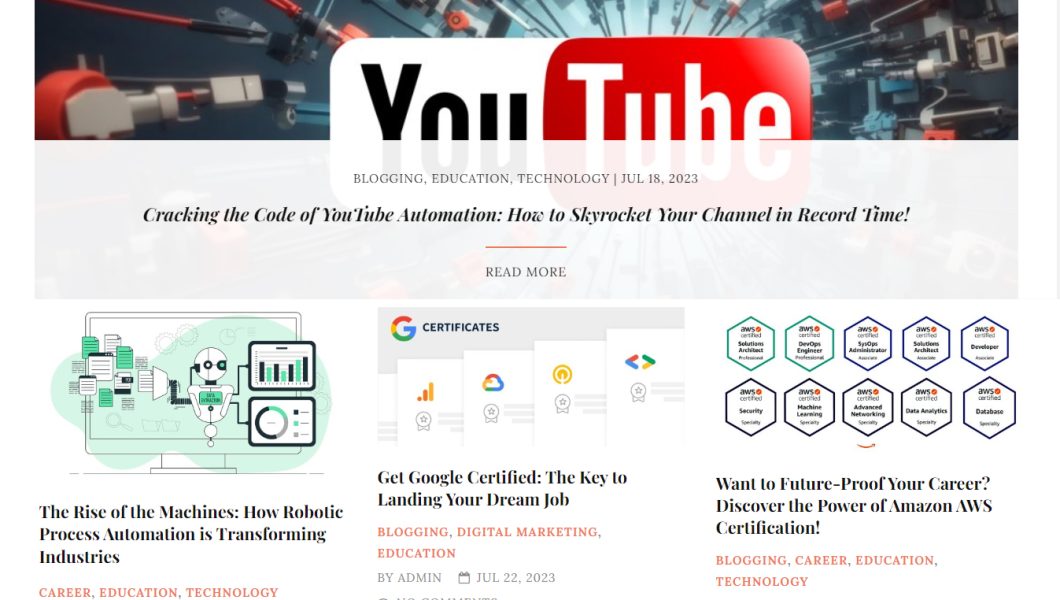Introduction for Blogger Mastery
When it comes to crafting compelling blog articles, one of the most crucial elements is providing readers with actionable advice. In this digital age, information is readily available, but what sets a great blog post apart from the rest is its ability to guide readers towards taking concrete steps and implementing the advice they receive. In this article, we will delve into the art of presenting blog article readers with actionable advice that they can apply in their lives or businesses. So, buckle up and get ready to learn how to create powerful, actionable content that will resonate with your audience.
Understanding Your Audience
The first step in delivering actionable advice is understanding your target audience. To create content that resonates, you must know who you are addressing. Take the time to research your readers’ preferences, pain points, and interests. Conduct surveys, analyze website analytics, and engage with your audience on social media. This information will help you tailor your advice to their specific needs, making it more relevant and impactful.
Identify the Problem
Before offering solutions, it’s essential to identify the problems your readers are facing. By pinpointing their pain points, you can address their concerns directly and offer actionable solutions. Be empathetic and show your audience that you understand their challenges. Use real-life examples or case studies to illustrate the problems and demonstrate that you have a comprehensive understanding of their situation.
Break Down Complex Concepts
When presenting advice, remember that not all your readers may be experts in the subject matter. To ensure your content is actionable for a broader audience, break down complex concepts into simple, easy-to-understand terms. Avoid jargon and technical language that might alienate some readers. Use clear explanations and provide step-by-step instructions to help your audience implement your suggestions successfully.
Utilize Visuals and Examples
Incorporating visuals and real-life examples can significantly enhance the actionable nature of your blog article. People often grasp information better through visual aids, such as infographics, charts, or diagrams. Additionally, real-life examples offer concrete evidence of how the advice you’re providing has worked in specific situations. This makes your content more relatable and encourages readers to apply your advice to their own circumstances.
Use Bold and Concise Language
To emphasize the key points and actionable steps in your blog article, use bold formatting to make them stand out. Bold text catches the reader’s eye, guiding them towards essential information. Keep your language clear, concise, and engaging. Avoid lengthy paragraphs and opt for shorter sentences that pack a punch. Your goal is to keep the reader’s attention and make it easy for them to grasp the actionable advice you’re providing.

Incorporate a Call-to-Action (CTA)
A powerful way to encourage your readers to act on your advice is to include a compelling Call-to-Action (CTA) at the end of your blog article. The CTA should be specific, urging the reader to take the next step immediately. Whether it’s subscribing to your newsletter, trying out a new technique, or making a positive change in their lives, a well-crafted CTA can be the catalyst for action.
Provide Additional Resources
Going the extra mile to offer supplementary resources can elevate the actionable nature of your blog article. Include links to relevant articles, videos, or downloadable guides that expand on the advice you’ve given. These resources offer added value to your readers and empower them with more in-depth knowledge to implement the advice effectively.
Testimonials and Success Stories
Testimonials and success stories are potent tools for showcasing the real-world impact of your actionable advice. When readers see how others have benefited from following your guidance, they are more likely to trust and adopt your suggestions. Incorporate testimonials from satisfied readers or clients who have achieved positive results through your advice.
Keep It Updated
Actionable advice should remain relevant over time. As trends and information change, revisit your blog articles periodically to ensure the advice you provide is up-to-date and accurate. An outdated article can lead readers astray, damaging their trust in your expertise. Regularly refreshing your content will demonstrate your commitment to delivering reliable and actionable information.
In conclusion, presenting blog article readers with actionable advice is a skill that every proficient content writer should master. By understanding your audience, identifying their problems, using visuals, bold language, and incorporating CTAs, you can create content that stands out and provides genuine value to your readers. Remember to keep your advice up-to-date and continually engage with your audience to refine your understanding of their needs. By doing so, you’ll establish yourself as a reliable source of actionable guidance and build a loyal readership that keeps coming back for more. So, start applying these strategies to your content creation process, and watch your blog articles soar to the top of search rankings, providing genuine value and transforming the lives of your readers.
Question: What is a blog?
Answer: A blog is a regularly updated online platform where individuals, known as bloggers, share their thoughts, knowledge, experiences, or expertise on various topics.
Question: How do I start a blog?
Answer: To start a blog, you need to choose a blogging platform, such as WordPress or Blogger, select a domain name, set up hosting, and design your blog. Then, start creating and publishing content on topics that interest you.
Question: Why do people blog?
Answer: People blog for various reasons, including self-expression, sharing knowledge, building a personal brand, connecting with like-minded individuals, and even monetizing their blogs through advertising or sponsored content.
Question: What are the benefits of blogging for businesses?
Answer: Blogging for businesses can help improve their online presence, establish thought leadership, attract more website traffic, engage with customers, and boost search engine rankings, ultimately leading to increased brand awareness and potential sales.
Question: How often should I update my blog?
Answer: The frequency of blog updates depends on your goals and resources. Consistency is essential, so aim to publish new content at least once a week or as often as your schedule permits.
Question: Can I make money from blogging?
Answer: Yes, it’s possible to make money from blogging through various methods like advertising, affiliate marketing, sponsored posts, selling digital products, or offering online courses.
Question: How can I drive more traffic to my blog?
Answer: To increase blog traffic, focus on producing high-quality, SEO-optimized content, promote your blog on social media, engage with your audience, collaborate with other bloggers, and leverage email marketing.
Question: Are there any legal considerations for bloggers?
Answer: Yes, bloggers should be aware of copyright laws when using images or content from other sources. Additionally, disclosing sponsored content and adhering to relevant advertising regulations are essential to maintain transparency with readers.
Question: How do I engage with my blog audience?
Answer: Engage with your blog audience by responding to comments, encouraging discussions, conducting surveys or polls, and seeking feedback on topics they’d like to read about.
Question: Can a blog help me build a personal brand?
Answer: Absolutely! A blog is an excellent tool for establishing and nurturing a personal brand. Consistently sharing valuable insights, expertise, and experiences can help you gain recognition and credibility in your field.






No Comments